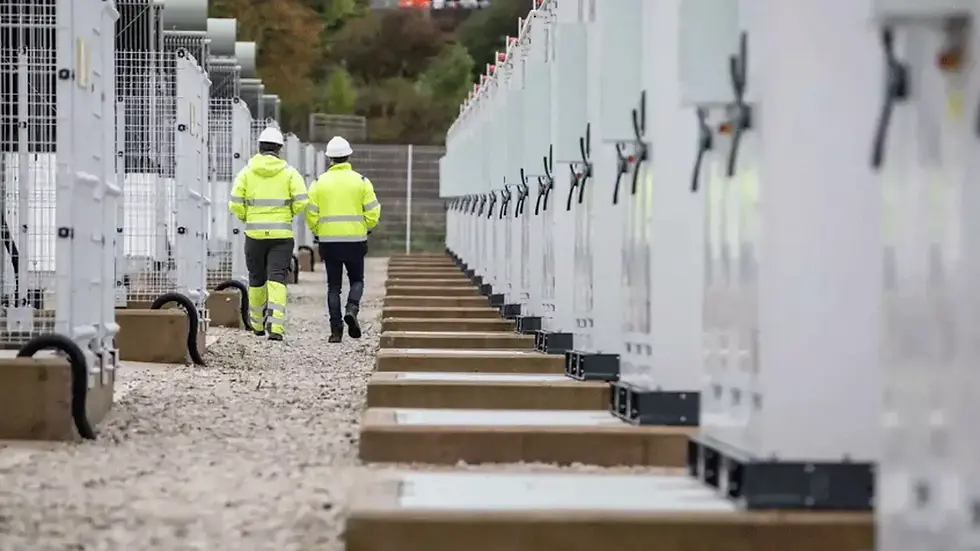Driving Toward Net Zero: NESO Highlights EVs and Storage as Cornerstones of Energy Transition
- Hanaa Siddiqi
- Jul 15, 2025
- 4 min read

Britain’s path to a low-cost, high-impact energy transition hinges on one thing: bold, sustained action. That’s the clear message from the National Energy System Operator (NESO), which just released its latest Future Energy Scenarios report.
The analysis lays out several potential futures for the UK energy system. It examines everything, from how energy is generated and transmitted to how it's stored and utilised with flexibility. And while each scenario has its vision, they all agree on one thing: the pace of change must accelerate significantly by 2030.
One scenario, called Hydrogen Evolution, explores a future where hydrogen dominates. It powers heating systems, fuels transportation, and even contributes to on-demand electricity generation. But there’s a twist. A different scenario, dubbed Electric Engagement, suggests that leaning into electrification could reduce costs and accelerate decarbonization across the board. Then there’s the third option: Holistic Transition. This balanced pathway combines electrification and hydrogen, while also aiming for significant improvements in energy efficiency and system flexibility.
In all three of these futures, one thing becomes clear: wind farms, solar panels, grid upgrades, and energy storage projects need to ramp up rapidly. Not just in the next few years, but well into the 2030s.
The UK Government has already set a bold target through its Clean Power 2030 mission. By the end of this decade, it wants at least 95 per cent of electricity to come from renewables, nuclear, and bioenergy. The remaining slice, just 5 per cent, can be powered by gas, preferably with carbon capture in place.
NESO’s modelling suggests that even without carbon capture, natural gas could still account for 5.7 to 7.9 per cent of final energy use by 2030, without breaking the UK’s legally binding carbon budgets. This flexibility allows for uncertainty in both supply and demand. Still, both the Holistic Transition and Electric Engagement pathways rely heavily on grid-scale storage. This includes batteries, pumped hydro, and emerging technologies such as gravity-based systems.
“Over the past year, we have run the electricity system at 95% zero-carbon for the first time and phased out coal entirely from our energy system, but this isn’t enough,” said NESO CEO Fintan Slye.
“We need to go further and faster, accelerating the roll-out of clean energy technologies is imperative to help deliver a clean and affordable energy system in the long term. The choices made today will shape the success of each wave of Britain’s transition.”
Flexibility is the other key piece of the puzzle. NESO sees demand-side flexibility as critical and forecasts its expansion through 2035. If done right, this could cut peak electricity demand by more than half by 2050.
The Future Energy Scenarios report states: “After partial discharging at peak, vehicles could still be fully charged by the morning without compromising their owners’ driving experience. They should be the focus for flexibility, particularly given the average battery size relative to average weekly mileage. This engagement from consumers with EVs and smart tariffs encourages flexibility of heat pumps and other appliances away from peak times, such as dishwashers, washing machines, and tumble driers.”
Interestingly, the most significant source of future flexibility isn’t an exotic new tech; it’s electric vehicles. NESO believes EVs could provide up to 51 gigawatts of flexible capacity by 2050, which is more than the total capacity of today’s UK gas-fired power stations. The logic is simple. Even after being partially discharged to help the grid during peak times, EVs can still be fully charged overnight without affecting drivers. The size of an average EV battery, compared to the average weekly driving distance of a car, means there’s vast potential for smart energy use.
This flexibility also extends to other household appliances. Smart tariffs and customer engagement can shift the use of heat pumps, dishwashers, washing machines, and dryers away from peak periods, thereby reducing the strain on the grid. And that’s not just theory.
The Demand Flexibility Service (DFS) has already shown how this works in practice. During the winter of 2022-2023, around 1.6 million homes and businesses participated, collectively shifting enough energy to save more than 3,300 megawatt-hours. The following winter, participation increased to 2.6 million, resulting in over 3,700 megawatt-hours saved. NESO is now looking at commercialising the DFS on a larger scale.
But domestic flexibility alone won’t cut it. NESO states that the UK also needs to tap into industrial flexibility, particularly in its heavy manufacturing hubs.
Across all scenarios, one significant challenge looms: renewable energy curtailment. That is, the amount of clean electricity that goes to waste because the grid can't use or store it. In the Hydrogen Evolution pathway, curtailment drops off sharply after 2035 because surplus energy is diverted into green hydrogen production. In other scenarios, curtailment decreases more slowly, as storage technologies take longer to scale and electricity demand rises.
Speaking of demand, NESO predicts it could nearly triple by 2050, from around 290 terawatt-hours today to somewhere between 705 and 797. That is a staggering increase.
Yet the payoff could be just as massive. The Climate Change Committee recently told government ministers that electrifying heat, transport, and industry could deliver two-thirds of the emissions cuts needed by 2042. Even better, this transformation could be achieved with an average annual investment of just 0.2% of GDP.
So the message is clear. If Britain wants to stay on track toward net zero, it needs to act decisively, starting now. The future is not written yet, but the tools to shape it are already in hand.





![LOGOTYPE [GREEN_DARK GREEN].png](https://static.wixstatic.com/media/d6e0b6_7c15be730f2c42d4ad22da5f1e69fa35~mv2.png/v1/fill/w_877,h_198,al_c,q_85,usm_0.66_1.00_0.01,enc_avif,quality_auto/LOGOTYPE%20%5BGREEN_DARK%20GREEN%5D.png)



Comments